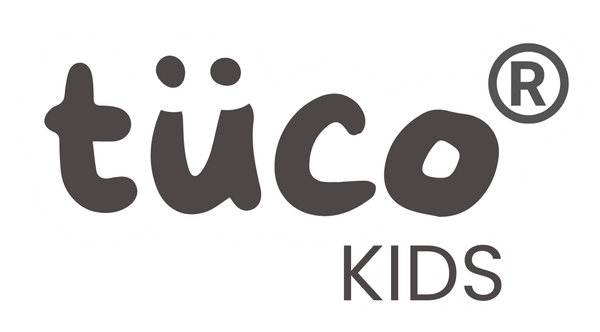
Makeup Kits for Kids: Safe Playtime Exploration Without Harsh Chemicals
Face paints and “play” makeup can be a joyful part of childhood: costumes, school plays, birthday parties, and rainy-day creativity. But kids’ skin is thinner, more reactive, and still developing, so the safety bar must be higher than for adult cosmetics. This guide gives parents a 360° view: how kids’ makeup works, what to buy (and avoid), age-wise readiness, hygiene rules, patch testing, and how to set healthy habits without dimming the fun. Additionally, it's important for parents to engage in open conversations with their children about makeup use among children, fostering a sense of understanding and responsibility. By emphasizing the creative aspects while also discussing safety and hygiene, parents can help cultivate a positive relationship with makeup. Encouraging self-expression through artfulness rather than conformity will allow children to enjoy makeup as a fun activity without losing sight of its potential impacts.
Why Kids’ Makeup Needs Special Rules
Skin biology: Children have a higher surface-area-to-body-weight ratio and a less mature skin barrier, so potential irritants penetrate more easily.
Behaviors: Lip licking, eye rubbing, and hand-to-mouth transfer increase exposure.
Use cases: Extended wear at events like dance recitals, festivals, and Halloween demands kinder formulations and careful removal.
The Safe-Ingredients Cheat Sheet
Prefer these (gentle and kid-friendly):
-
Water-based face paints and gels
-
Plant butters and oils such as shea, cocoa, jojoba, squalane
-
Food-grade or mineral pigments like iron oxides and titanium dioxide
-
Zinc oxide for physical UV protection in outdoor face paints
-
Sugar or plant-polymer glitters (biodegradable or cellulose), not plastic
Avoid these (higher irritation or toxicity risk):
-
Fragrance or “flavor” oils (common irritants)
-
Formaldehyde-releasing preservatives (e.g., DMDM hydantoin, imidazolidine urea)
-
Phthalates, PFAS or fluorinated compounds (look for “perfluoro-” or PTFE)
-
Parabens if your family prefers to minimize them
-
Coal-tar dyes (certain lakes), loose glitter around eyes, and microplastics
-
Nail solvents like toluene, DBP, and formaldehyde; choose water-based or peel-off instead
Pro tip: “Non-toxic,” “natural,” and “hypoallergenic” are marketing terms, not guarantees. Rely on the full ingredient list, patch testing, and reputable manufacturers.
What a Safer Kids’ Makeup Kit Can Include
-
Tinted lip balm or lip and cheek tint: Wax or butter base with food-grade pigments, plus SPF for outdoor days. Explore lip tint here
-
Water-based face paints: Primary colors with white and black for mixing, and a biodegradable glitter gel for accents.
-
Water-based, peel-off nail color: Skip harsh removers and avoid adult gel or acetone systems. Explore water based nail color here
-
Eye area caution: If you include an eyeliner or mascara, choose ophthalmologist-tested formulas and avoid glitter near eyes. For younger kids, use face paint designs around the eyes, not directly on the waterline. Explore Kajal Here
-
Tools: Soft synthetic brushes or sponges in a zip pouch, plus a mild brush cleanser.
Age-by-Age Readiness and Boundaries
-
Ages 3–5 (pretend play): Stick to clear balms, a touch of face paint on cheeks or forehead, and water-based nail color. Always supervise. No eye makeup.
-
Ages 6–8 (guided creativity): Use simple designs with water-based paints, limited sparkle gels, and strict no-share rules.
-
Ages 9–12 (independent play emerging): Add tinted balms or cheek tints, beginner eyeliner for performances only, and peel-off nail color. Teach ingredient reading and removal routines.
-
12+ (pre-teens and teens): Broader palettes are fine, but keep the same safety standards, hygiene, and event-based use (not everyday wear).
Pro Tip: Read your context too. School policies, cultural events, or skin conditions like eczema and dermatitis may require extra caution or skipping makeup during flare-ups.
Hygiene Rules That Matter as Much as Ingredients
-
Patch test every new product on the inner forearm or behind the ear 24 hours before big wear.
-
No sharing. Kids love to share, but this spreads germs.
-
Clean tools weekly using mild soap for sponges and gentle shampoo for brushes, and air-dry them fully.
-
Wash hands before application.
-
Check shelf life: liquids and creams usually last 6–12 months after opening, face paints typically 12–18 months.
-
Store products in a cool, dry place, keep lids shut, and avoid bathroom humidity.
Removal and Aftercare Routine (Simple and Gentle)
-
Wash hands, then remove makeup with lukewarm water and a mild cleanser or micellar water on cotton pads.
-
Do not scrub. Loosen long-wear bits with a dab of bland ointment (like petrolatum) and wipe gently.
-
Dont forget to moisturize. Apply a gentle, fragrance-free barrier cream or gel-cream.
-
If irritation appears, stop using the product, rinse thoroughly, and moisturize. If redness persists or blisters or eye symptoms occur, see a pediatrician or dermatologist.
Quick Comparison: Red Flags vs Safer Swaps
|
If you see… |
Why to skip |
Safer swap |
|
“Parfum/Fragrance” high on list |
Common irritant |
Fragrance-free |
|
PTFE or perfluoro-* |
PFAS family |
PFAS-free claims with simple wax or oil bases |
|
“Cosmetic glitter” (plastic) |
Eye risk and microplastics |
Plant-cellulose glitter gel |
|
Toluene, DBP, or formaldehyde (nails) |
Solvent or irritant trio |
Water-based peel-off nail color |
|
Loose glitter on eyelids |
Corneal risk |
Painted shimmer with mineral pigment |
House Rules Parents Can Post on the Fridge
-
Use makeup for events, not daily.
-
Ask before opening anything new.
-
No sharing makeup or tools.
-
Patch test first and stop if it becomes itchy.
-
Always remove makeup before bed.
-
Clean your station and wash tools weekly.
Makeup can be a healthy part of play when the products, routines, and rules are kid-centric. Choose water-based, fragrance-free, PFAS-free options, keep hygiene consistent, limit wear to special occasions, and teach kids to read labels and listen to their skin. Safety does not take away the fun — it makes it possible for them to enjoy makeup confidently.

